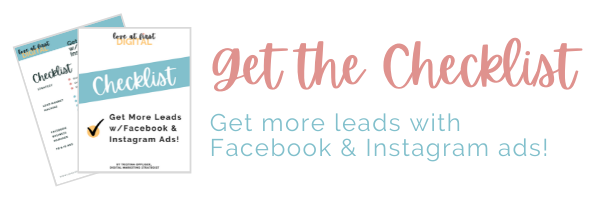
Best Business Tools for Running an Online Businesses
If you’re a small business owner, I’d like to introduce you to business tools like Asana, Dubsado, and WordPress. These tools are your new best friends for marketing and running your business efficiently as well as increasing productivity.
When it comes to running a business online, there are a plethora of platforms, software, and tools. Truthfully, starting with these tools can be a little overwhelming. But, don’t resort back to your good ol’ pen and paper just yet. If you’re willing to invest some time setting everything up, using these common business tools can transform the way you do business.
What’s in it for you? Well, it means you will have more time to spend on what you do best, from anywhere.
Are you ready to get a handle on running your business online? If so, read on.
Jump ahead to explore the tools you need
Why do you need small business tools and software?
Modern small businesses and those that are self-employed (especially those operating online, from home, or with remote teams) can greatly benefit from using business-oriented software, services, and technologies. These tools help businesses operate more efficiently, prioritize tasks, and stay organized. In running my digital marketing agency, I can attest that these tools have made a huge difference in allowing me to focus on perfecting my services, rather than on administrative processes.
If you work in teams or outsource, there are business tools that allow your entire organization to achieve results and stay in sync. This could mean less late night phone calls, missed meetings, or weeks gone by without posting on social media.
As remote work and virtual workplaces continue to evolve, small business software and tools do too! You can find a tool to do just about any task you need, such as:
- Project management
- Proposals, contracts, and invoicing
- Email Marketing
To sum up, there are a lot of business tools that can help level-up your business and give you the time to focus on what you do best.
Small Business Tools
Here are my favorite small business tools and software to help you work smarter, not harder.
(There is a free version available for each of the tools listed unless otherwise noted.)
Scheduling Tools
Scheduling tools allow you to stop playing phone tag or going back and forth on email trying to find a time to meet. You can simply give out your link, and new or existing clients can book a time that works for both of you.
Calendly – Calendly is a great tool that syncs with your existing Google calendar. Simply give clients your Calendly link, and they can book an open time on your calendar. You can also choose to link Calendly to Zoom to send them an automatic Zoom calendar invite!
Acuity – With acuity, clients can schedule their own appointments and even fill out an intake form at the point of booking. One of the benefits to using a paid tool such as Acuity is that it integrates with Facebook, meaning you can put a “Book Now” button on your Facebook and Instagram business pages. (Starts at $14/mo.)
This section covers both email marketing and business email tools.
Google Workspace (formerly G-Suite) – The Google Workspace is more than just Gmail. Through Google Workspace, you can set up a professional email (name@yourdomain), aliases (support@yourdoman). Add team members, and keep everything organized with Google Drive, Calendar, and the rest of your favorite Google apps. (Starts at $6/mo.)
Boomerang – This nifty Chrome extension helps you track email responses and schedule emails to be sent later. To expand, if you’re working late, in another time zone, or going on vacation, you can schedule emails in advance. You can also “pause” your inbox, allowing you to focus without getting distracted. Lastly, you can mark emails to “boomerang” back to you when it’s time to follow up.
Mailchimp – Known for email campaigns (sales sequences and monthly newsletters), you can also create landing pages, contact forms, check your audience insights and more with Mailchimp. It’s is a pretty sophisticated program, so you’ll need to take some time to learn it to reap its benefits. Another favorite is ActiveCampaign, which incorporates automation and CRM.
Convertkit – Convertkit is an email marketing program that is made with creators in mind. The free version is pretty basic, so if you want to send emails automatically and build funnels, you may want to check out their paid plans.

Graphics & Photos
Want to add graphics to your social media or webpage for a professional image without having to hire a photographer or graphic designer? These sites have got you covered.
Canva – With Canva, you can easily create designs in just about any shape or size you need. They have templates for social posts, presentations, and logos to give your materials a professional look.
For free high quality stock photos, my favorite sites are Unsplash and Pexels. You can find amazing photos on just about any topic. Artist attribution is appreciated, but not required.
Project Management
Project management tools help your team (or just you) stay on task and focused on your goals and projects.
Asana – My preferred tool, Asana keeps you from shuffling through email, spreadsheets, calendars, and more. You can manage, plan, and track all of your projects in one place. Be sure to get a business account so that you can organize your tasks easily.
Trello – Trello is a project management tool that uses board, lists, and cards to “collaborate, manage projects, and reach new productivity peaks.” Some people prefer it over Asana, but I didn’t like it nearly as much. Give them both a try, and see which one you prefer!
CRM
When it comes to managing your business and your clients, a customer relations management (CRM) tool can make a world of difference. Not only will it keep you organized, but your clients will be impressed by your professionalism and prompt communication.
Dubsado – Dubsado is a suite of business management tools all in one place. You can collect leads, send automated emails, build and price your packages, and send contracts, for instance. It’s quite involved and will take some time to learn, but Dubsado makes it easy by offering sample templates and training videos. (Free for the first 3 clients, then $350/yr.)
Honeybook – This client management software handles billing, project management, and your service offerings, all in one place. (Starts at $9/mo.)
Payments
If you’re charging for any services, you need a way to make and send invoices.
Quickbooks – Use QuickBooks to track expenses and mileage, invoice clients, and avoid IRS penalties. In addition, you can link your business accounts and credit cards. Click the link for 50% off the first few months. (Self-Employed version starts at $7/mo with discount.)
Paypal – Anyone can use PayPal to send and receive money, and it links to your bank accounts and credit cards. You can even request money from others, worldwide. Additionally, it’s a well-known and trusted brand and offers protections for you and your customer. (Fees range from 1-4%.)
Screen recording
Want to send your client a quick update or a tutorial? Sometimes it’s more efficient to send a video.
Loom – Download this Chrome extension to record your screen with just a click! Then, send a video link. (Five minute time limit on free version; business plans start at $8/mo.)
Business cards
Though they might feel dated, business cards are alive and well. Be sure to print some to take to in-person networking groups, to pass out when chatting in line at the grocery store, or to your doctors’ appointments. You never know when someone might be interested in what you do!
Canva – You can design your cards in Canva using any of their templates. Instead of choosing, “download,” just choose, “print business cards” when your design is complete. Shipping is quick, and the quality for the price is excellent. (Price varies.)
Moo – I haven’t personally used Moo, but I’ve played around on their website after hearing about them from a fellow digital marketer. Moo is known for unique designs, special finishes, and a premium paper selection. Want to make an impression? Try Moo. (Price varies.)
FedEx – If you’re in a pinch, you can design or upload designs on FedEx.com. Then, pick them up at your local FedEx in about 24 hours. Note: In my experience, these weren’t the best quality. But, they were a great option when I needed cards fast. (Price varies.)

Communication
In this ever-changing world, there are many options to connect with clients and teammates. Check out some of our favorite options.
Google Voice – Keep your personal and work numbers separate by signing up for a Google voice phone number. Download the APP to your smartphone, and keep your work calls and texts in one place. The APP have some limitations like showing your actual phone number if you make and outbound call (you can change this in the settings). It’s also a great option if you don’t use your phone or text to communicate much with clients.
Slack – Slack has quickly become one of my favorite messaging platforms. Think of it like a virtual office. If you have a team, you can keep all communications in Slack organized with hashtags. Add your clients, and you can message each other from anywhere in the world! You can easily set your hours, integrate your calendar (so teammates can see if you’re in a meeting), and snooze notifications on nights and weekends!
An alternative I haven’t used that is gaining popularity is Flock, the team communication and online collaboration platform. To help you decide, see this article on Slack vs. Flock.
Zoom – Zoom is video conferencing software that gives small businesses the flexibility of communicating face-to-face from just about anywhere. You can conduct discovery calls, monthly reporting, team meetings, and more using Zoom. Features that make your meetings more productive are capabilities like screen sharing and recording.
Social Media Management
No business these days is exempt from the social media game. Even if you aren’t actively trying to convert your followers to clients, it’s still important to have an online presence. Since it can be overwhelming to post daily or even weekly, find an approved APP that will let you pre-schedule your posts and relieve the pressure to post.
Later – Later is an all-in-one social marketing program. Plan your content, and Later will do the work of publishing for you! It has its limits, such as you can only post photos (not articles or simple text), so it’s best suited to Instagram in my opinion. However, the free version is a great place to start.
Buffer – More than a scheduling tool, Buffer is for those who are serious about building a brand through social media. Publish, share stories, and engage with comments fast to gain customer trust. The free version is super limited, so consider this when you’re ready to invest.
Read more on the best social media management tools.
Website & Landing Pages
Most businesses these days need a website, especially if you plan to get clients, leads, or sales online.
WordPress – Close to half of the webpages online are built on WordPress. Do yourself a favor, and build your website on the platform. You will find plenty of support, themes, and integrations that make maintaining a site relatively trouble-free!
Bluehost – In order for your website to show up on the internet, you’ll need a hosting provider. My preferred hosting site is Bluehost. Not only do they have some of the best customer service via chat, their technical platform is pretty easy to navigate and connect with WordPress. You can purchase your domain through them as well. I also know people that love Hostgator, so I recommend checking that out as well. (Starts at $2.95/mo.)
Business Credit Card
If you’re a small business or freelancer, consider a dedicated credit card to keep your business and personal finances separate.
Chase – I’m personally a fan of Chase and especially love how easy it is to rack up points with their Chase Freedom card. So, it’s a no-brainer for me to go with Chase for a business card. Compare their business cards, and see if one is right for you!
American Express – A lot of business owners swear by American Express for their great card benefits (like 4-5X points back on certain categories). They even have two free Amazon business cards now!
Nerdwallet does great reviews on the best small business credit cards. They’ll help you decide what card is best for your business in terms of intro bonuses, categories for cash back, dining or hotel points, etc.
Outsourcing/Freelance
After you’ve got your business processes in place, you may want to outsource. If posting on your LinkedIn or asking for referrals in Facebook groups doesn’t bring in quality candidates, consider the options below.
Upwork – Post a job on Upwork, and talent will come to you. Set a job description and price, and freelancers will send you proposals. Look them over, and decide who you’d like to interview! (Price varies.)
Fiverr – On Fiverr, you can search directly for freelance services such as graphic design, video editing, and translation services. Freelancers price their work upfront according to the packages they offer, so you know exactly what you’re paying for. (Price varies.)
Please note that platforms like Upwork and Fiverr take a percentage of the fee that you pay freelancers. Thus, some freelancers will pass the charge along to you by raising their prices slightly. Others will take the loss in exchange for gaining a client. If you don’t like this business model, try to find someone the old fashioned way.
Automation
Automation is setting something up to run automatically. It’s based on the “if this happens, then do that” idea. Instead of spending time on tasks that you do repeatedly, you can tell a machine to do them for you. This can free up your time, make you appear more professional (no more forgetting to respond to leads), and keep your team and clients happy.
Zapier – Zapier moves information between your web apps automatically so that you aren’t spending your time on small, repetitive tasks. Without coding, you can tell Zapier to complete an action when another action occurs in another app. For example, when someone makes a purchase on your website, Zapier can tell Slack to notify your team. Check out some examples of how Zapier can be used to automate your business.
Automate.io – Touted as one of the best alternatives to Zapier, you can connect over 200 apps in minutes so that you can focus on what’s important.
Office Supplies
We all need office supplies. Have them delivered to your door from your favorite online vendor.
Amazon Business – For all your business supplies, you can easily make purchases by using your Prime account (Try free for 30 days if you don’t have one). Alternatively, create an Amazon business account (for those that need more supplies, more often or want to keep their personal and business accounts separate). (Price varies.)
Conclusion
So, what tools does a business need? As you can see, there are lots of business tools online that can help you streamline your processes.
Fortunately, it’s a wonderful time to be an entrepreneur. As you wear many hats in your business, there have never been more business tools available to help you!
Check out the tools we’ve listed, and let us know how they help you run your business more efficiently!
Disclaimer: Some of the links on this site may be affiliate links. At no cost to you, I may receive a small commission if you make a purchase after clicking a link. If you have any questions about how this works, feel free to contact me.





